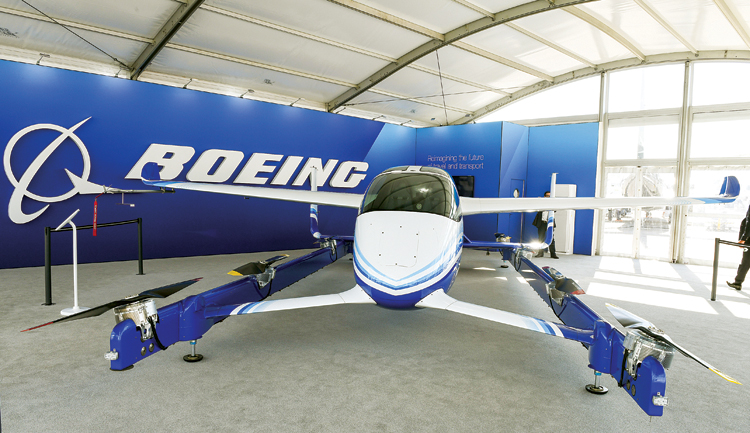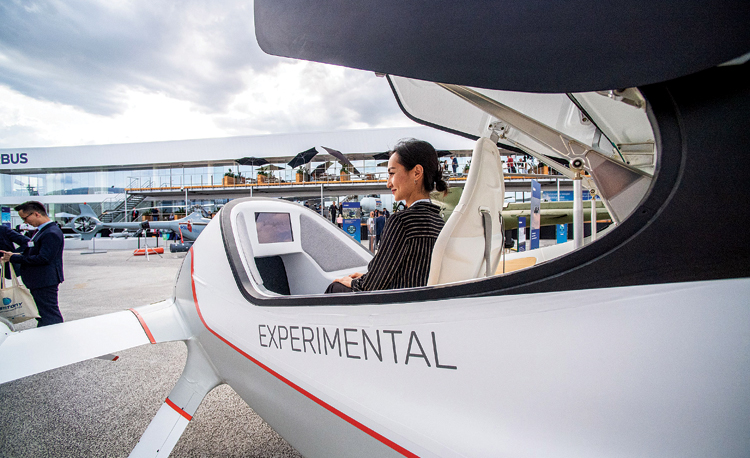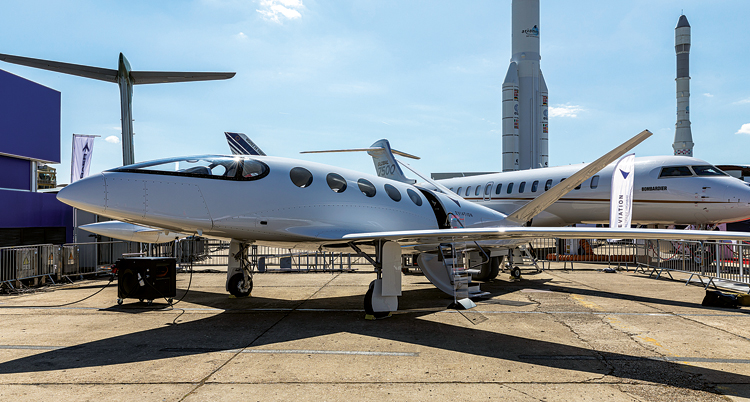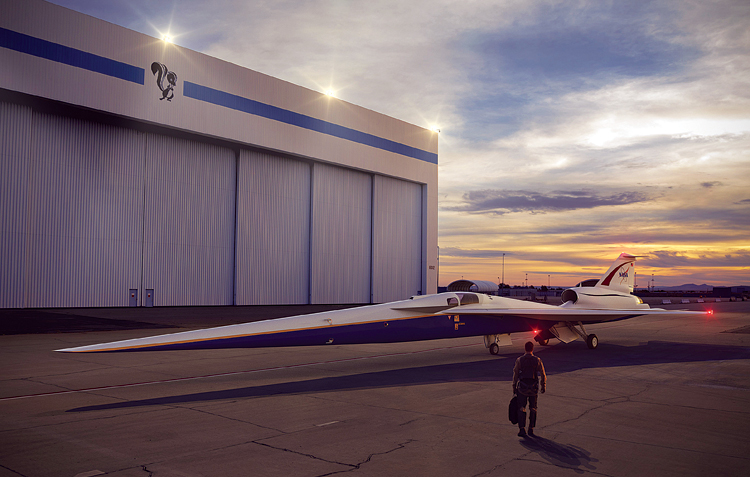Paris Air Show Stands Tall for Pivotal Aerospace Activities, Yet Again
The Paris Air Show, a biennial international event, has grown to be a hub for major developments in the global aerospace market

Followed by much anticipation, the longest-running air show successfully completed its 53rd edition in June at Le Bourget Parc des Expositions, France. Despite being the oldest, the biennial International Paris Air Show (PAS) never compromises on the novelty of ideas. PAS has grown to be a hub for major developments in the global aerospace market. This year as well the major aerospace conglomerates from across the globe gathered for some of the most significant deals and displays from commercial aviation that graced the show.
BOEING
Contrary to apprehensions, Boeing refrained from the announcement of any new plane. The industry was hoping Boeing to announce its New Midsize Aircraft (NMA), alternatively known as the 797 but the wait was not over.
Boeing seemed dependent on freighter orders to occupy the Boeing 777 slots. While Qantas Airways committed to buying five Boeing 777Fs, China Airlines ordered about six and ASL Aviation Holdings also tentatively agreed for around 10 of the 737-800BCFs.

Among the passenger aircraft, Turkmenistan Airlines ordered a Boeing 777-200LR and Air Lease Corporation committed to buy five wide-body 787 Dreamliners while Korean Air announced its intent to acquire thirty 787 Dreamliners, ten 787-10s and 787-9.
However, Boeing’s highlight was the announcement of a letter of intent from International Airlines Group (IAG), the parent company of British Airways, Iberia, Vueling, Aer Lingus and Level for around 200 of the 737MAX.
The Boeing 787-9 was scheduled for flight display while a 737 Boeing Converted Freighter was on static display.
AIRBUS
PAS allowed Airbus to stage its 50 years of pioneering progress.
The daily flying display of Airbus’ included the long-range A350-1000 flagship, and the A330neo. A Hi-Fly A380 was also in the flying display towards the end.
The static display featured an airBaltic A220-300, an A330neo flight-test aircraft, and the first A321neo single-aisle aircraft.

The main feature for Airbus in PAS was the launch of Airbus’ much anticipated long-range A321XLR. The single-aisle plane that can undertake up to a ten-hour flight, is being looked at as an economical solution for airlines wanting to serve long distance routes between smaller cities. The launch came with the announcement of 27 initial orders for the plane from Air Lease Corporation. Qantas Group ordered 10 of these aircraft and converted orders for 26 existing A321neos to orders for A321XLR. American Airlines also ordered around 20 and converted about 30 A321neo orders to XLR. IndiGo Partners tentatively ordered 32 XLR aircraft and converted 18 existing A320neo family orders.
THE PARIS AIR SHOW WHICH WAS ALL ABOUT INNOVATION AND FUTURE, WITNESSED A CONSIDERABLE STRESS ON HYBRID AND ELECTRIC AIRCRAFT
A tentative order for 11 Airbus A320neo was received from China Airlines and that of around 20 from Lessor Accipiter Holdings. Even Saudi Arabian Airlines is expected to boost A320neos family fleet up to 100.
EMBRAER COMERCIAL
Marking the 50 years of history existence, Embraer too celebrated its anniversary with a remarkable presence in the 53rd edition of the Paris Air Show.
With the KLM Royal Dutch Airlines committing to Brazilian manufacturer for a tentative order of 15 Embraer E195-E2 aircraft. In addition to this, 20 purchase rights were fully congealed. Hence, in all Embraer announced KLM’s intention to buy up to 35 E195-E2 Jets.
Embraer also struck a deal with United Airlines for the purchase of up to 39 E175s.
Embraer showcased the newest masterpiece to join the family of the second generation Embraer Commercial Jets, Profit Hunter E195-E2 TechLion which turned to be the eye-catcher throughout the show shining bright in the sun painted distinctly and beautifully with a lion face.
This year, the Praetor 600, the KC-390 and the E195-E2, with the fuselage all painted in TechLion theme, represented Embraer at the flight display.
BOMBARDIER COMERCIAL
Near completion of a divestment deal was also announced by the company during the show for Mitsubishi to acquire its CRJ regional jet programme. This deal marked Bombardier’s exit from commercial aviation. Last year, Bombardier had sold its business jets C-Series programme to Airbus and had finished the sale of its Dash 8 turboprop line to Longview Aviation Capital early this year.
PRATT & WHITNEY
From Embraer to Gulfstream to Dassault and many others, Pratt & Whitney’s presence extended to many of the big names whose displayed aircraft had Pratt & Whitney’s engines installed.
At the Embraer display, the profit hunter powered by PW1900G Geared Turbofan caught the attention.
The GTF has saved enough fuel to take 2,50,000 passenger vehicles off the road. This green engine with groundbreaking geared turbofan technology could be discovered at PAS.
The geared architecture that brings unmatched economic and environmental benefits allow the GTF engine to be in a league of its own.
Pratt & Whitney announced it has surpassed 17,500 engine deliveries, including auxiliary power units (APUs), to power aircraft for Airbus and its partners, subsidiaries and joint venture companies.

CFM INTERNATIONAL
CFM international, a joint venture between GE Aviation and Safran Aircraft Engines, registered orders for $50.2 billion, setting new records in terms of total engines as well as total value of sale during the 2019 Paris Air Show.
Orders and commitments for over 1,150 LEAP engines were announced by the company. The LEAP engine is characteristic of 3D-printed fuel-nozzle tips and parts from space-age materials called ceramic matrix composites (CMCs), which help it save fuel, lower emissions and achieve other performance benefits. These engines are designed for next generation passenger jets developed by Airbus, Boeing, and COMAC.
On the first day of the air show, CFM announced signing the largest single jet engine order in history with the low-cost Indian airline, IndiGo. CFM will supply IndiGo with its LEAP-1A engines to power 280 Airbus A320neo and A321neo aircraft.
Malaysian low-cost airline, AirAsia also finalised an agreement with CFM for the purchase of 200 LEAP-1A engines to power the airline’s 100 Airbus A321neo.
The global, full-service aircraft lessor, CDB Aviation, also announced an order for CFM’s LEAP-1A engines to power 45 Airbus A320neo aircraft.
THE SONIC SENSATION
With the constant and rapid advancement in aviation, the supersonic regime is among the most awaited and the Paris Air Show was clearly a demonstration of what the flying would look like in the future.

Even though still in the conceptual stage, Lockheed Martin Aeronautics’ unveiling the design of a new supersonic airplane during the air show was a perfect knock at the door that opens into this era of supersonic air commute. A sleek twin-engine jet plane that will fly at Mach 1.8, carrying 40 passengers, the Lockheed Martin’s supersonic aircraft is capable of trans-Pacific routes. The highlight of the airliner is how it manages to do away with the issues of sonic boom and airport noise. The X-59 is expected to undertake its first flight in 2021.
Supersonic transport start-up Boom Supersonic announced partnering with aviation design specialists JPA Design for the cabin interiors for its Overture Mach 2.2 airliner which presently is under development. It is nearing completion of the composites-intensive XB-1, a subscale prototype of the Overture that is expected to be rolled out by the end of 2019 and test flew sometime in 2020.
WITH THE CONSTANT AND RAPID ADVANCEMENT IN AVIATION, THE SUPERSONIC REGIME IS AMONG THE MOST AWAITED AND THE PARIS AIR SHOW WAS CLEARLY A DEMONSTRATION OF WHAT THE FLYING WOULD LOOK LIKE IN THE FUTURE.
Northrop Grumman and Raytheon announced their partnership at PAS for the creation of a new hypersonic weapon. The unnamed weapon is expected to travel at speeds higher than Mach 5.
E-CRAFT
The Paris Air Show which was all about innovation and future, witnessed a considerable amount of stress on hybrid and electric aircraft many of which were on display:
Eviation’s Alice: Gathering the maximum attention among the electric aircraft was the prototype of Israeli startup Eviation Aircraft’s all-electric airplane christened as Alice. The debuting vehicle that can fly nine passengers up to 650 miles on a single charge, announced a deal at the air show with US regional airline Cape Air to launch commercial flights. With testing and certification already underway, the plane that cruises at 10,000 feet should be ready by 2021.
Airbus’ Vahana: An all-electric vehicle demonstrator from A3 (Airbus’ Silicon Valley innovation centre) is Airbus’ innovative project, Vahana, the prototype of which was on display at the Paris Air Show clearly attracting attention. A single-seat, tilt-wing vehicle demonstrator that focuses on advancing self-piloted, electric vertical take-off and landing (eVTOL) flight, Vahana has flown over 80 full-scale test flights.
EcoPulse: A hybrid aircraft to be tested by 2022 was also announced by Airbus in collaboration with aviation industry conglomerate Daher which will look after components and systems installation and rocket engine maker Safran that will provide a propulsion system for the aircraft called EcoPulse. Airbus will be responsible for batteries and aerodynamic design. A small model of the distributed hybrid propulsion system was also on display.
Boeing’s Flying Taxi: Another futuristic aircraft prototype on display was Boeing’s Passenger Air Vehicle (PAV), an eVTOL air taxi. PAV is asserted to be able to autonomously transport passengers, plan routes, respond to contingencies and detect and avoid unexpected obstacles. Aurora Flight Sciences is developing both two and four-passenger variants with cargo options, ensuring PAV’s potential to change how people, goods, and ideas move throughout the world.
Project 804: A hybrid-electric project dubbed as Project 804 was also unveiled by United Technologies (UTX) as it announced plans to merge with defence contractor Raytheon. Built on a mid-sized regional turboprop, the plane uses existing airframe, systems and propellers; but innovates with batteries and a twomegawatt hybrid electric propulsion system. The planes are aimed for a 2022 launch.
Cessna 337: Aviation start-up Ampaire announced a major deal with Personal Airline Exchange for the order of converting 50 electric planes. Ampaire has been working on the conversion of existing aircraft such as the Cessna 337.
E-Fan X: Another major deal was cracked with the UK engineering company Rolls-Royce acquiring the electric flight division of Germany’s Siemens eAircraft. The purchase of the electric and hybrid-electric aerospace propulsion business was announced by Rolls-Royce at the air show. Further, in a collaboration with French Airbus, the two companies will develop another hybrid electric propulsion system entitled E-Fan X that will apparently be big enough to power a large jet plane.





